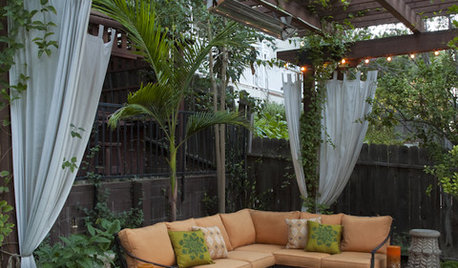New build--heating and A/C question
tracey_b
14 years ago
Related Stories

GREEN BUILDINGInsulation Basics: Heat, R-Value and the Building Envelope
Learn how heat moves through a home and the materials that can stop it, to make sure your insulation is as effective as you think
Full Story
GREEN BUILDINGConsidering Concrete Floors? 3 Green-Minded Questions to Ask
Learn what’s in your concrete and about sustainability to make a healthy choice for your home and the earth
Full Story
FLOORSWhat to Ask When Considering Heated Floors
These questions can help you decide if radiant floor heating is right for you — and what your options are
Full Story
GREAT HOME PROJECTSHow to Add a Radiant Heat System
Enjoy comfy, consistent temperatures and maybe even energy savings with hydronic heating and cooling
Full Story
FLOORSIs Radiant Heating or Cooling Right for You?
Questions to ask before you go for one of these temperature systems in your floors or walls (yes, walls)
Full Story
LIGHTING5 Questions to Ask for the Best Room Lighting
Get your overhead, task and accent lighting right for decorative beauty, less eyestrain and a focus exactly where you want
Full Story
REMODELING GUIDESConsidering a Fixer-Upper? 15 Questions to Ask First
Learn about the hidden costs and treasures of older homes to avoid budget surprises and accidentally tossing valuable features
Full Story
GREEN DECORATING8 Questions to Help You See Through Green Hype
With the ecofriendly bandwagon picking up some dubious passengers, here's how to tell truly green products and services from the imposters
Full Story
FEEL-GOOD HOMEThe Question That Can Make You Love Your Home More
Change your relationship with your house for the better by focusing on the answer to something designers often ask
Full Story
GARDENING AND LANDSCAPINGChill Out: 10 Cool Ways to Beat the Heat Outdoors
Step away from the A/C's artificial blast — and treat yourself to these more natural cool-down methods in the great outdoors
Full Story





tigerdunes
tracey_bOriginal Author
Related Professionals
Elmwood Park Solar Energy Systems · Forest Park Solar Energy Systems · Little Ferry Solar Energy Systems · Milpitas Solar Energy Systems · Pinellas Park Solar Energy Systems · Ramsey Solar Energy Systems · West Hartford Solar Energy Systems · Mill Valley Solar Energy Systems · Fort Collins Home Automation & Home Media · Hull Home Automation & Home Media · Lakeway Home Automation & Home Media · Newark Home Automation & Home Media · Newtown Square Home Automation & Home Media · Silver Spring Home Automation & Home Media · Sugar Hill Home Automation & Home Mediatigerdunes
brothersheating
creek_side
tigerdunes
countryboymo
tracey_bOriginal Author
david_cary
weedmeister
creek_side
david_cary
CJ Mechanical of North jersey llc.
david_cary